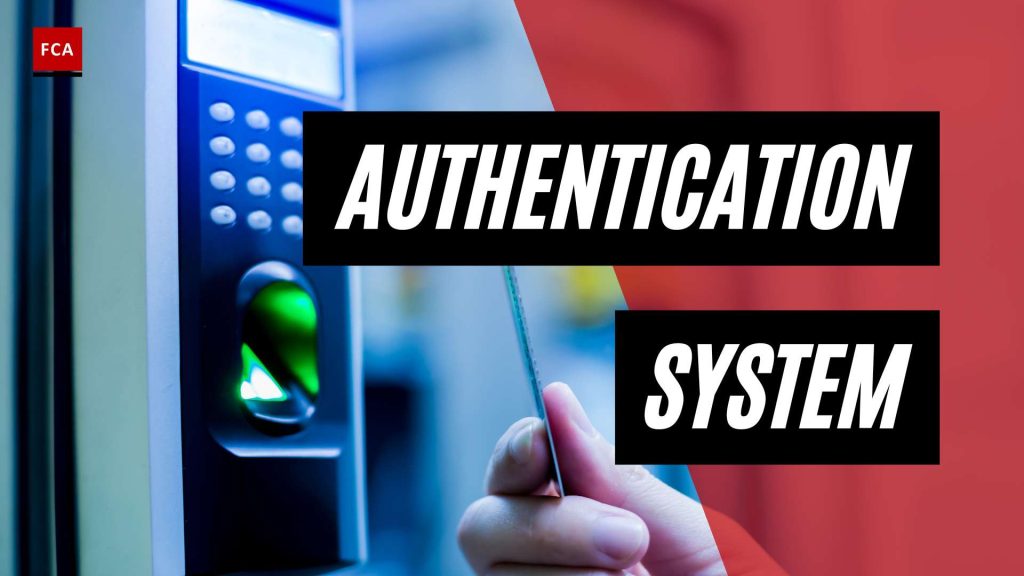The Importance of Biometric Verification Technologies
Biometric verification technologies are becoming increasingly important in various industries as they offer enhanced security, reliability, and streamlined user authentication processes. By utilizing unique biological traits such as fingerprints, faces, voices, eyes, and even body odor for identification and access control, biometric authentication systems provide a robust and secure approach to identity verification and access management.
Enhancing Security and Reliability
One of the primary reasons for the growing popularity of biometric authentication systems is their ability to enhance security. Biometric data is unique to each individual, making it significantly more difficult to replicate or steal compared to traditional password-based methods. This uniqueness provides an added layer of protection against unauthorized access and fraud, reducing the risk of identity theft and impersonation (TechTarget).
With different biometric methods boasting high accuracy rates, organizations can rely on biometric authentication systems to ensure only authorized individuals gain access. For example, fingerprint recognition systems can have an error rate as low as one in 50,000, making them highly reliable for identity verification purposes.
By implementing biometric verification technologies, organizations can strengthen their security measures, mitigate security risks, and protect sensitive information from unauthorized access. This is particularly crucial in industries such as finance, healthcare, and government, where safeguarding data and ensuring privacy are of utmost importance.
Streamlining User Authentication
In addition to enhancing security, biometric verification technologies offer the advantage of streamlining user authentication processes. Traditional methods of authentication, such as passwords or PINs, can be cumbersome and prone to human error. Users often struggle to remember complex passwords or may inadvertently share them, compromising security.
Biometric authentication systems simplify the authentication process by utilizing unique biological traits that are inherent to the individual. Users can authenticate themselves by simply presenting their fingerprints, faces, or other biometric features, eliminating the need to remember and enter passwords.
This streamlined user authentication not only improves convenience but also enhances the user experience. Users no longer need to go through the hassle of memorizing and managing multiple passwords. Instead, they can rely on their inherent biological traits for quick and secure access to their accounts or physical spaces.
By adopting biometric verification technologies, organizations can provide their users with a seamless and user-friendly authentication experience, saving time and reducing frustration.
Biometric verification technologies play a vital role in enhancing security, reliability, and user experience across various industries. As these systems continue to advance, their adoption is expected to grow, further transforming the way organizations verify identities and control access.
Biometric Authentication Systems in Various Industries
Biometric authentication systems have revolutionized the way we verify and authenticate identities across various industries. These systems offer applications beyond traditional security access, showcasing the versatility and widespread use of this technology. Let’s explore the diverse applications and advancements in biometric technologies.
Applications Beyond Traditional Security Access
Biometric authentication systems are employed in numerous industries to enhance security and streamline user authentication processes. Beyond traditional security access, these systems have found applications in:
-
Healthcare: Biometrics are increasingly used in the healthcare industry to protect patient records and ensure the correct identity of patients, reducing the risk of fraud and errors in healthcare processes (Aware). Biometric authentication can help healthcare providers securely access patient information and ensure accurate identification during medical procedures.
-
Law Enforcement: Law enforcement agencies are adopting biometric systems to enhance public safety by accurately identifying individuals, aiding investigations, and improving overall security measures. Biometric technologies support the identification and verification of suspects, reducing the reliance on subjective identification methods.
-
Government Services: Biometric technologies, such as facial recognition, voice, fingerprint, or iris scanning, are becoming more advanced, cheaper, and accurate, leading to increased integration into people’s daily lives and interactions with the government (OVIC). Governments employ biometrics for various purposes, including border control, e-passports, and citizen identification programs.
-
Financial Services: The financial industry utilizes biometric authentication systems to enhance security and fraud prevention measures. Biometric solutions are employed in financial institutions to ensure secure access to accounts, authenticate transactions, and protect sensitive customer data.
Advancements in Biometric Technologies
Biometric technologies have witnessed significant advancements, making them more accurate, reliable, and convenient. Some notable advancements include:
-
Multi-Modal Biometric Systems: Instead of relying on a single biometric trait, multi-modal biometric systems combine multiple biometric identifiers to enhance accuracy and reliability. By utilizing different modalities such as fingerprints, facial features, voice, or iris patterns, these systems offer increased authentication accuracy and reduce the chances of false positives or negatives.
-
Improved Accuracy and Speed: Advancements in biometric algorithms and hardware have led to faster and more accurate identification and verification processes. These advancements ensure that biometric systems can handle high volumes of data efficiently while maintaining accuracy levels required for reliable authentication.
-
Enhanced User Experience: Biometric authentication systems continue to improve the user experience by offering seamless and convenient ways to authenticate. Users can simply authenticate themselves using their unique biometric traits, eliminating the need to remember passwords or carry physical access cards. This streamlines the authentication process and reduces the chances of identity theft or fraud.
As biometric authentication systems continue to evolve, their adoption across industries is expected to increase. The advancements in biometric technologies, coupled with the growing need for secure and convenient authentication methods, highlight the significance of biometrics in the modern digital landscape. Organizations are recognizing the benefits of implementing biometric compliance solutions to enhance security, protect sensitive data, and ensure regulatory compliance (biometric compliance solutions). By leveraging the power of biometric verification technologies, industries can establish robust and trustworthy identity management systems.
Types of Biometric Authentication Methods
Biometric authentication utilizes unique physical or behavioral characteristics to verify and authenticate individuals. There are several types of biometric authentication methods that are widely used in various industries. These methods include fingerprint recognition, facial recognition, iris recognition, and other biometric modalities.
Fingerprint Recognition
Fingerprint recognition is one of the most common and widely used biometric authentication methods. It relies on capturing and analyzing the unique patterns present in an individual’s fingerprint. This method is known for its accuracy, speed, and affordability. Fingerprint recognition is widely applicable in domains such as smartphones, law enforcement, and access control systems.
Different sensors, such as optical, thermal, or capacitive sensors, can be used to capture and store fingerprint data. The stored data is then compared to the fingerprint presented during authentication. Fingerprint recognition systems offer high accuracy and are relatively fast, making them a popular choice for biometric authentication.
Facial Recognition
Facial recognition is another popular biometric technology that analyzes unique facial features to identify individuals. It is extensively used in surveillance, security, and access control applications. Facial recognition systems capture an individual’s facial characteristics, such as the distance between the eyes, nose, and mouth, and create a unique template for identification purposes. This template is compared to the facial features captured during the authentication process.
Advancements in facial recognition technology have made it more accurate and reliable. The use of deep learning algorithms and neural networks has significantly improved facial recognition systems’ ability to identify individuals even in complex scenarios. Facial recognition is widely used in airports, border control, law enforcement, and unlocking smartphones.
Iris Recognition
Iris recognition is a highly accurate biometric authentication method that relies on the unique patterns in the colored part of the eye (iris) to verify identity. The iris has intricate and distinctive patterns that are unique to each individual. Iris recognition systems capture an individual’s iris pattern using specialized cameras and compare it to the stored template for verification.
One of the main advantages of iris recognition is its high level of accuracy, making it suitable for robust identification purposes. It is commonly used in high-security environments such as airports, government facilities, and financial institutions. Iris recognition systems require individuals to position their eyes correctly in front of the camera, allowing for accurate capture and verification.
Other Biometric Modalities
In addition to fingerprint, facial, and iris recognition, there are several other biometric modalities that offer different levels of security and convenience. These modalities include hand geometry, palm vein, voice recognition, signature, and keystroke dynamics. Each modality captures unique attributes of an individual and can be used for various applications such as physical access control, financial transactions, and computer logins.
Hand geometry recognition measures and analyzes the shape and size of an individual’s hand. Palm vein recognition utilizes near-infrared light to capture and analyze the unique vein patterns in an individual’s palm. Voice recognition technology verifies individuals based on their unique voice characteristics, finding applications in call centers and security systems. Signature and keystroke dynamics analyze an individual’s unique signature or typing patterns for authentication purposes.
As biometric verification technologies continue to advance, multi-modal biometric systems that combine multiple biometric modalities are becoming more prevalent. These systems provide enhanced accuracy and reliability by utilizing different biometric characteristics for authentication purposes.
By leveraging the strengths of various biometric authentication methods, organizations can implement robust and secure identity verification systems that enhance security, streamline user authentication, and provide a seamless user experience.
Benefits of Biometric Authentication Systems
Biometric authentication systems offer numerous benefits, making them a game-changing technology in the realm of identity verification and access control. These systems provide high accuracy and reliability, increased security and fraud prevention, as well as convenience and an enhanced user experience.
High Accuracy and Reliability
One of the key advantages of biometric authentication systems is their high level of accuracy and reliability. Biometric data, such as fingerprints, facial features, and iris patterns, are unique to each individual, making it extremely difficult to replicate or steal. This uniqueness ensures that the authentication process is highly accurate, reducing the risk of false positives or false negatives.
Fingerprint authentication, for example, has become widely used in various industries due to its effectiveness and reliability. Systems like Apple’s Touch ID and Face ID have significantly improved security by replacing traditional passcodes. Face ID, for instance, has a 1 in 1,000,000 chance of being unlocked by a random person, compared to 1 in 50,000 for a 4-digit passcode (LinkedIn).
Increased Security and Fraud Prevention
Biometric authentication systems provide a higher level of security compared to traditional methods that rely on passwords, PINs, or access cards. Biometric traits are unique and difficult to replicate or forge, making it challenging for unauthorized individuals to gain access to sensitive information or facilities. Biometric data, such as face patterns, fingerprints, and iris scans, are near-impossible to replicate with current technology, making them difficult to spoof (Mitek Systems). The chance of having the same fingerprint as a hacker trying to gain unauthorized access is about one in 64 billion.
By leveraging biometric verification technologies, organizations can enhance security measures, prevent fraud, and protect sensitive data. These systems offer an added layer of protection by verifying tangible, real-world traits that users possess, making it significantly more difficult for unauthorized individuals to bypass security measures (Mitek Systems).
Convenience and User Experience
Biometric authentication systems also offer convenience and an improved user experience. Traditional methods of authentication, such as remembering passwords or carrying access cards, can be cumbersome and prone to errors. Biometric authentication eliminates the need for users to remember complex passwords or carry physical tokens, streamlining the authentication process.
With a simple touch of a finger, a scan of the face, or a glance at an iris scanner, users can quickly and effortlessly authenticate their identity. This seamless user experience not only saves time but also reduces the frustration associated with traditional authentication methods. Additionally, biometric authentication systems can be integrated into various devices, including smartphones and laptops, further enhancing convenience and accessibility for users.
In summary, the benefits of biometric authentication systems are clear. They offer high accuracy and reliability, increased security and fraud prevention, as well as convenience and an improved user experience. As advancements in biometric technologies continue to evolve, these systems are becoming an integral part of various industries, revolutionizing the way we verify identities and protect sensitive information.
Privacy and Security Considerations
As biometric authentication systems become more prevalent in various industries, it is crucial to address privacy and security concerns related to the use of biometric data. Safeguarding this sensitive information is essential to ensure the integrity of biometric verification technologies.
Protection of Biometric Data
Protecting biometric data is of utmost importance to maintain user privacy and prevent unauthorized access. Organizations and service providers must implement robust security measures to safeguard this data. This includes encryption techniques, secure storage protocols, and stringent access controls.
Biometric data should be stored in a secure environment, with access limited to authorized personnel only. Encryption methods, such as hashing algorithms, can be used to convert biometric information into a unique digital representation that cannot be reverse-engineered to obtain the original data.
Additionally, multi-factor authentication and multi-modal biometric systems can add an extra layer of security. By combining multiple biometric traits, such as fingerprints and facial recognition, the system becomes more resilient to spoofing and unauthorized access attempts.
Addressing Privacy Concerns
While biometric authentication systems offer numerous benefits, it is essential to address privacy concerns associated with the collection and use of biometric data. Organizations must adhere to strict privacy regulations and obtain explicit consent from individuals before collecting their biometric information.
Transparency is key in building trust with users. Service providers should clearly communicate how biometric data will be collected, stored, and used. They should also establish clear policies regarding data retention and destruction to ensure compliance with privacy regulations.
It is important to note that biometric data should be used solely for the purpose of authentication and not shared with third parties without explicit consent. Service providers must implement robust security measures to prevent data breaches and unauthorized access to biometric databases.
By prioritizing the protection of biometric data and addressing privacy concerns, organizations can build confidence among users and ensure the responsible and ethical use of biometric authentication systems.
To learn more about biometric verification technologies and their applications in compliance, risk management, anti-money laundering, and anti-financial crime, visit our articles on biometric identity management, biometric identity verification, and biometric compliance solutions.
The Future of Biometric Verification Technologies
As biometric verification technologies continue to evolve, their adoption is growing across various industries. The future of biometric verification looks promising, with advancements in biometric systems and emerging market trends shaping the landscape.
Growing Adoption and Market Trends
The global biometrics market is projected to exceed $50 billion by 2024, driven by industries such as finance, healthcare, and government sectors adopting biometric technologies. Organizations recognize the value of biometric authentication systems in enhancing security, streamlining processes, and improving user experience.
One of the key trends in the biometrics industry is the integration of multi-modal biometric systems, which combine multiple biometric modalities to enhance accuracy and reliability. These systems leverage complementary biometric traits such as fingerprint, facial recognition, voice, or iris scanning technologies to provide more robust identity verification (multi-modal biometric systems). This approach helps address limitations associated with individual biometric modalities, such as environmental factors or changes in physical attributes.
Advancements in Biometric Systems
Advancements in biometric security are ongoing, driven by technological innovations and research. For example, the introduction of 3D facial recognition in the latest smartphones, such as the iPhone 13, has significantly improved the accuracy and reliability of facial recognition systems. These advancements reduce the likelihood of unauthorized access and enhance the overall security of biometric authentication systems.
Furthermore, biometric technologies such as facial recognition, voice recognition, fingerprint scanning, and iris scanning are becoming more advanced, cost-effective, and accurate. This progress has led to increased integration of biometric systems into people’s daily lives and interactions with the government (OVIC). As these technologies continue to evolve, we can expect further improvements in accuracy, speed, and reliability, making biometric verification systems even more effective.
The advantages of biometric authentication systems are increasingly recognized, as they offer high accuracy and reliability, increased security and fraud prevention, and convenience for users. Organizations are leveraging biometric compliance solutions and biometric KYC solutions to meet regulatory requirements and combat financial crime. Biometric transaction monitoring and biometric watchlist screening are also becoming integral parts of anti-money laundering and risk management strategies.
As the technology continues to mature, it is important to address privacy and security considerations associated with biometric data. Organizations must take measures to protect biometric data, ensuring compliance with privacy regulations and addressing concerns regarding data storage, access, and potential misuse. By implementing robust security protocols and adhering to privacy best practices, the potential risks associated with biometric data can be mitigated (biometric identity verification).
In conclusion, the future of biometric verification technologies is characterized by growing adoption, emerging market trends, and advancements in biometric systems. As organizations recognize the advantages of biometric authentication systems, we can expect continued innovation and integration across various industries. By balancing security, privacy, and user experience, biometric verification technologies have the potential to revolutionize the way we authenticate and verify identities.









